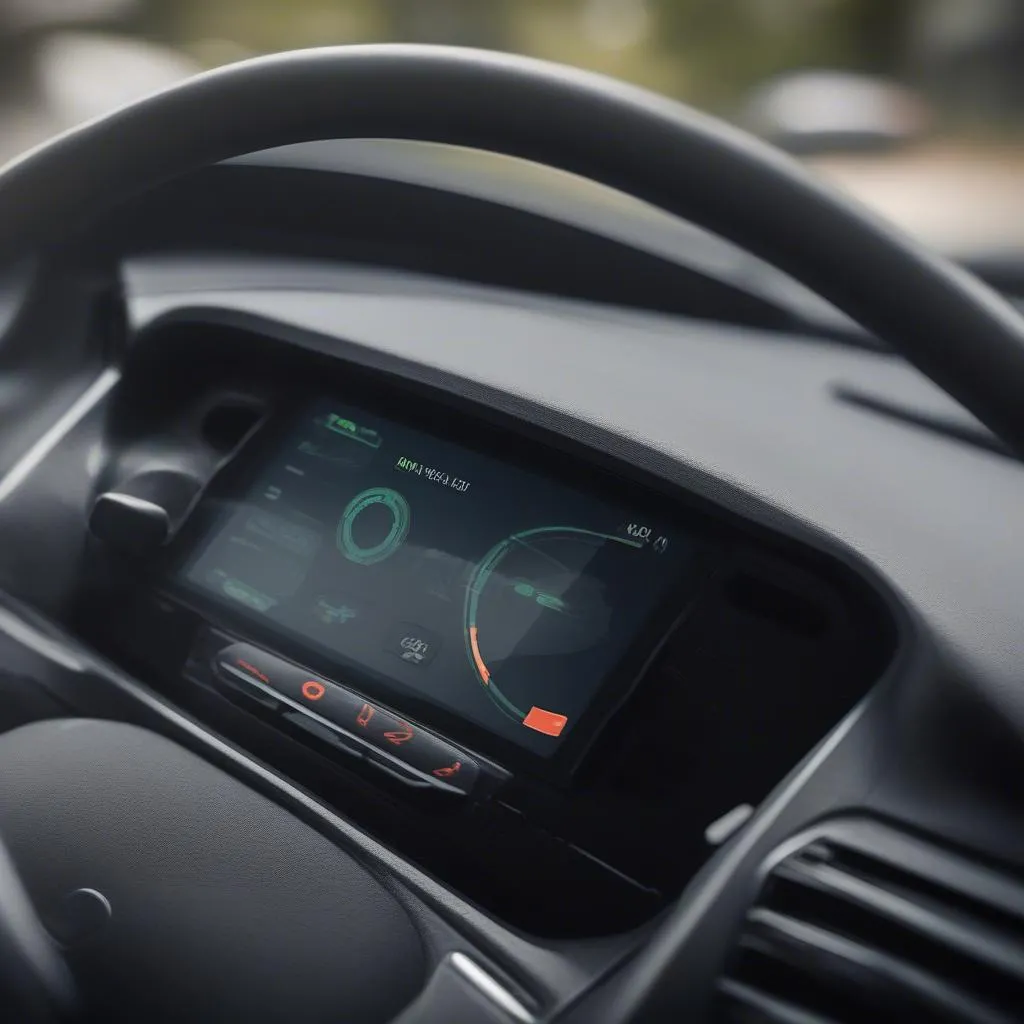Imagine this: you’re driving down a California highway, the Pacific Ocean breeze in your hair, when suddenly, your check engine light pops on. Frustrating, right? But before you panic and rush to the nearest mechanic in San Francisco, remember the OBD2 connector—your car’s own personal data port. This little guy can save you time, money, and a whole lot of stress. But first, you need to find it.
What’s the Deal with the OBD2 Connector Location?
The “OBD2 connector location” might sound like a technical term only mechanics whisper, but understanding it can empower any car owner.
- For Mechanics, this location is their starting point for diagnosing car troubles. It’s like a detective finding the first clue at a crime scene.
- From a Technical Perspective, the OBD2 port allows communication between your car’s computer (the ECU) and diagnostic tools, revealing hidden error codes and sensor data.
- Economically Speaking, knowing where to plug in your OBD2 scanner can save you expensive trips to the auto repair shop for minor issues.
Decoding the Mystery: Where is the OBD2 Port?
Most vehicles manufactured after 1996 have a standardized OBD2 port. It’s typically located within three feet of the steering wheel, under the dashboard. However, it’s not always in plain sight. Some common hiding spots include:
- Behind a small, removable panel
- Near the fuse box
- Below the steering column
- Inside the center console
Still can’t find it? Don’t worry! Your vehicle’s owner’s manual is your best friend. It usually has a diagram showing the exact location of the OBD2 connector.
 OBD2 Port Location
OBD2 Port Location
Common Questions About OBD2 Connector Locations
Here are some questions we often hear from car owners just like you:
Q: Is the OBD2 connector location the same on all cars?
A: While most cars have it within reach of the driver’s seat, the exact spot can vary. Always consult your owner’s manual or a reliable online resource for your specific make and model.
Q: Can I use any OBD2 scanner with my car?
A: While most scanners work universally, some vehicles, especially European makes like BMW or Audi, might require specialized scanners.
Q: I found the port, but my scanner isn’t connecting. What should I do?
A: Ensure your car’s ignition is turned to the “on” position. If it still doesn’t connect, there might be a compatibility issue or a problem with the port itself.
Unlocking the Power of Your OBD2 Port
Knowing where to find your OBD2 connector is like having a secret weapon in your glove compartment. It allows you to:
- Diagnose engine problems: Read and understand those pesky check engine lights.
- Monitor car performance: Track fuel economy, engine speed, and other vital signs.
- Customize your driving experience: Some advanced scanners even let you tweak certain vehicle settings.
Ready to Dive Deeper into the World of Car Diagnostics?
For more tips on OBD2 scanners, troubleshooting car problems, and getting the most out of your vehicle, check out these articles:
- How to Choose the Right OBD2 Scanner
- Understanding OBD-II Port Location
- Troubleshooting Common Car Problems
Need help setting up your diagnostic tools? Our team of expert mechanics is here to assist you 24/7. Contact us via Whatsapp at +84767531508 and let us help you become a more confident car owner.
Your Car, Your Control
The OBD2 connector is more than just a port; it’s a gateway to understanding your car better. By knowing its location and how to use it, you take control of your vehicle’s health and your peace of mind on the road.
 Using an OBD2 scanner
Using an OBD2 scanner